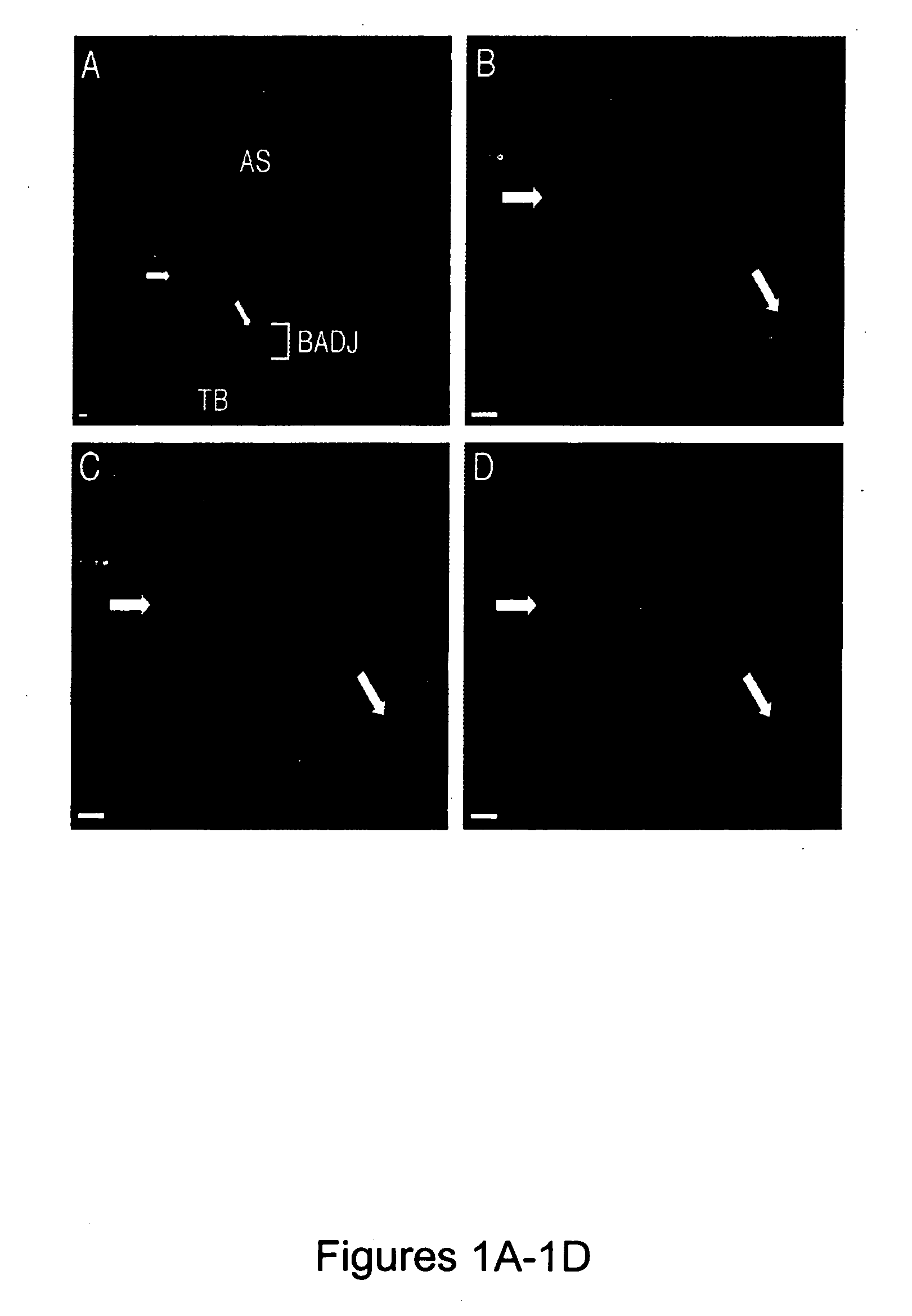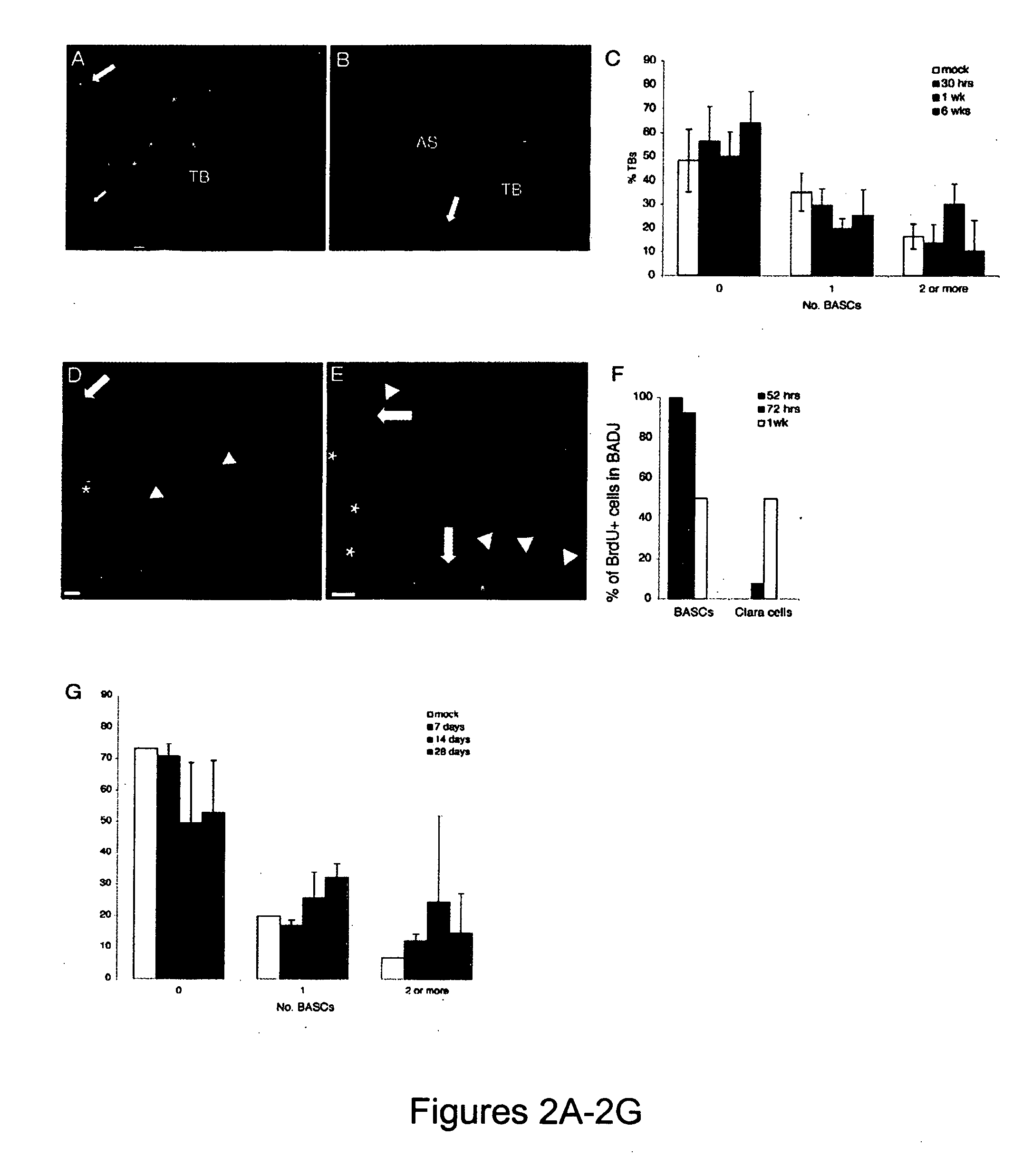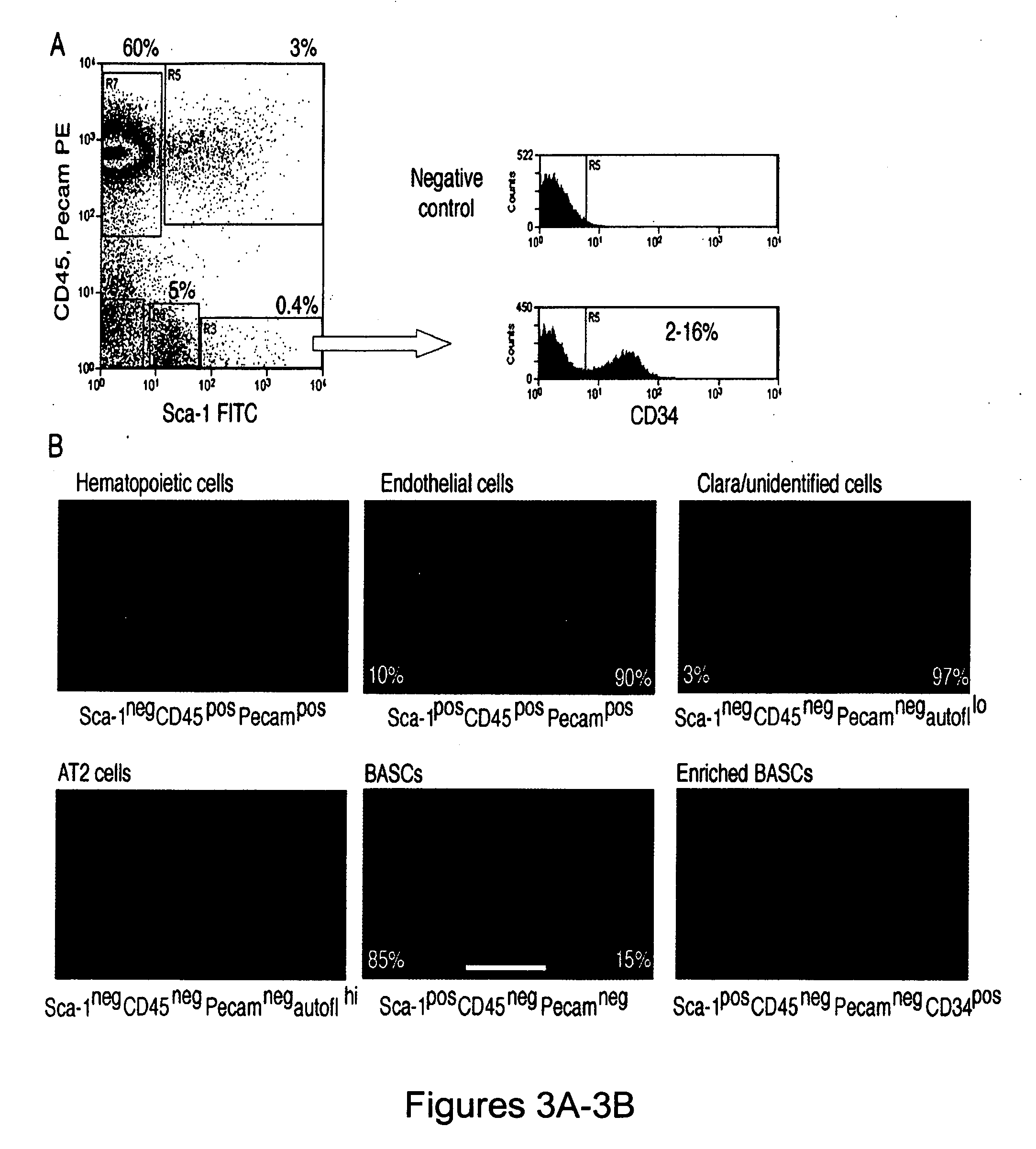Bronchioalveolar stem cells and uses thereof
a technology of stem cells and bronchial veins, applied in the field of bronchial vein stem cells, can solve the problems of inability to screen early stage lung cancer, current lung cancer therapy is lethal to normal cells as well as tumor cells, and there is no screening method for early stage lung cancer
- Summary
- Abstract
- Description
- Claims
- Application Information
AI Technical Summary
Benefits of technology
Problems solved by technology
Method used
Image
Examples
example 1
Isolation of BASC cells
[0059] In the present invention, a method of isolating BASCs has been developed. Based on their staining for AT2 and Clara cell-specific markers, their response to damage in vivo, and their location at the bifurcation between bronchiolar and respiratory epithelium, BASCs may constitute a stem or progenitor cell population that maintains Clara cells and AT2 cells in adult lung. As CCA and SP-C are cytoplasmic, intracellular markers, they are less preferable for live cell isolation of BASCs by FACS. A preferable marker is a be marker that is present on the surface stem cells. Sca-1, for example, is present on the surface of hematopoietic stem cells and mammary-gland progenitors (Morrison et al. (1994) Immunity 1, 661-673 and references within; Welm et al. (2002) Dev. Biol. 245, 42-56), and is useful in the present method as a marker for selecting BASC cells.
[0060] The following protocol was developed for the purification of BASCs by flourescence-activated cell...
example 2
BASCs Exhibit Stem Cell Properties in Culture
[0065] Lung epithelial cells harvested using the above-described FACS protocol formed colonies after one week when grown on feeders (FIG. 4A). All cells in feeder-grown colonies from BASC cultures were CCApos SP-Cpos suggesting that growth on feeders maintained the cells' undifferentiated state. Eighty percent of colonies on feeders from total lung cultures also contained CCApos SP-CPO5 cells, but in all colonies examined, these cells were only a portion of the colony. The remainder of total lung colonies contained CCAneg SP-Cpos cells. Thus, the colonies present in total lung cultures likely arose from a mixture of AT2 cells, BASCs, and other unidentified cells, an important note for subsequent analyses of total lung cultures. As expected, AT2 cultures only contained SP-Cpos cells (FIG. 16).
[0066] Several methods were used to show that the colonies arising from BASC cultures were clonal. First, 5% of single-cell cultures of Sca-1pos CD...
example 3
Involvement of BASCs in Lung Cancer
[0072] Increases in BASC population are observed in mouse models of lung cancer. Data presented here indicate that increases in BASC population are an early-stage event in lung cancer, and thus are useful in the early detection and diagnosis of such cancers.
CCA-Positive, SP-C-Positive Cells in Normal Adult Lung
[0073] As described above, DPCs (BASCs) are initially observed in small clusters in Lox-K-ras lung tumors, representing a small proportion of the total tumor cell population that largely consists of SPCpos cells (Jackson et al., supra). Tumor DPCs may therefore originate from a cell population in the adult lung similar to embryonic lung epithelial precursors that are positive for Clara and AT2 cell markers (Wuenschell et al. (1996) J. Histochem. Cytochem. 44, 113-123). Therefore, sections of wild-type lung can be examined by dual immunofluorescence (IF) for CCA and SP-C. As shown in FIG. 1, DPCs are identified in normal lung at the BADJ. ...
PUM
 Login to View More
Login to View More Abstract
Description
Claims
Application Information
 Login to View More
Login to View More - R&D
- Intellectual Property
- Life Sciences
- Materials
- Tech Scout
- Unparalleled Data Quality
- Higher Quality Content
- 60% Fewer Hallucinations
Browse by: Latest US Patents, China's latest patents, Technical Efficacy Thesaurus, Application Domain, Technology Topic, Popular Technical Reports.
© 2025 PatSnap. All rights reserved.Legal|Privacy policy|Modern Slavery Act Transparency Statement|Sitemap|About US| Contact US: help@patsnap.com



